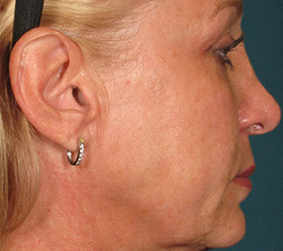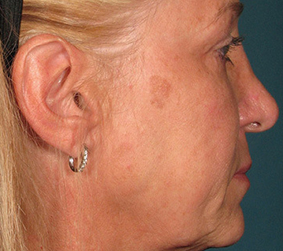What is Melanoma?

You’ve learned that a coworker has been diagnosed with malignant melanoma and has to have surgery. You wonder exactly what melanoma is. Malignant melanoma is a skin cancer which strikes people of all ages and walks of life. This potentially deadly cancer of the deepest layer of the epidermis centers on the cells which produce skin pigment. The dermatologists at South Coast Dermatology & Cosmetic Center in Boston South Shore, MA, want you aware of your skin and how what seems to be a harmless spot could be skin cancer.
What’s so bad about it?
Unlike squamous cell carcinoma and basal cell carcinoma, two other common kinds of skin cancer, malignant melanoma forms and spread rapidly, attacking the lymph nodes and other bodily organs. The Skin Cancer Foundation says melanoma kills more than 10,000 people in the United States alone annually.
While heredity plays something of a role in developing this killer, excessive sun exposure adds to the problem. In fact, the Skin Cancer Foundation maintains that tanning (either with the sun or with artificial light) leads to significant numbers of melanoma cases in young women, ages 25 to 29.
What does melanoma look like?
Something which starts out resembling a harmless mole (a brown to black, raised and circular lesion) could change into melanoma. That’s why we all must monitor our skin for new and/or evolving marks, blemishes, moles, textures and areas of pigmentation.
Your board-certified dermatologist at South Coast Dermatology & Cosmetic Center asks you to inspect your skin monthly and to come to the office annually after the age of 40 for a complete visual inspection. Also, know the danger signs of skin cancer, specifically the ABCDEs of moles:
A stands for asymmetry. A benign mole should stay the same shape and size. If you were to draw an imaginary line down the middle of a mole, the right and left halves should remain the same over time.
B stands for border. The edges of a harmless mole are smooth, without any notches or scallops.
C means color. Most normal moles are brown to black, with their pigment evenly distributed throughout. Multi-colored moles are dangerous and should be checked.
D stands for diameter. It should be no more than 6 mm, or the size of the eraser on the top of a pencil.
E means evolving. If a mole changes in color, texture or shape, or if it itches or bleeds, see your doctor.
Treating melanoma
The quicker the diagnosis and treatment of malignant melanoma, the better the long-term outcome is. The physicians at South Coast Dermatology & Cosmetic Center in Boston South Shore use standard surgical excision, but more advanced cases may require chemotherapy and other cancer treatment modalities.
Know your skin
It’s your best defense against skin cancer in Boston South Shore, and of course, use sunscreen (SPF 30). See the team at South Coast Dermatology & Cosmetic Center for additional information or to arrange your routine skin examination. Call today: 781.335.9700.
Contact South Coast Dermatology online or call 781.335.9700 for more information.






















